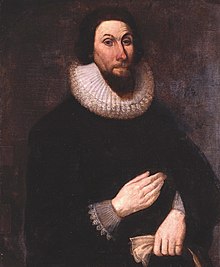“Duly Noted” are posts that call attention to work by other people. “Deplorables, or Disposables?” summarizes my friend Arthur J. Kover’s research on the degree to which Americans feel that they are disposable. Arthur Kover adapted his work for publication in a magazine, but apparently no editors appreciated its relevance. His work deserves a wider recognition because it presciently identifies an attitude that led to Donald Trump’s election.
In 2013, Arthur Kover and Howard Moskowitz did a study of 250 people drawn randomly from a larger, representative panel. The 250 people were asked to evaluate the chances of six hypothetical persons being laid off. These hypothetical individuals were from varying occupations: a hotel maid from Jamaica; the owner of a local deli; a machinist in a US company; a teacher in an urban high school; a stockbroker; and an executive in a large international company. A subsequent study included two more hypothetical people, a fashion model and “a person like me.”
A constant was calculated to give an overall idea of the probability of anyone being disposed of. This single number is the contingent probability of anyone thinking anyone else could be disposed of. For this study, the constant was 27. This number represents the estimate that between one-quarter and one-third of the populace would think that others—any others—could be thrown away.
27 may not appear to be a large proportion, but there are some surprising aspects here. One is that there is relatively little difference from this base contingent probability for any of the six hypothetical people. That means that people believe that nearly everyone in our society has an equal chance of being disposed of. Everyone is vulnerable.
The case was different in regard to the two added hypothetical people. As one might readily expect, most respondents viewed the fashion model as having a greater chance of being disposed of. In contrast, “the person like me” was viewed as having a lower chance of being thrown away. Objectively, perhaps, a respondent might acknowledge that this could indeed happen, but subjectively it would be more likely to happen to somebody else. (The research data is noted at the end of this post.)
Early in 2015, Arthur Kover did a second study that was qualitative rather than quantitative. He wanted to explore how people felt about their perceived vulnerability. He interviewed six men and two women, ranging in age from mid-twenties to almost ninety. Their occupations included a retired police chief from a small town, a college student, a truck driver, a retired professor of sociology, a building contractor, a homemaker, a high school teacher with tenure, and an unemployed laborer. The retired police chief rejected the idea that people could be thrown away: “When bad things happen, you just dust yourself off and find something else. It’s a question of character.” The high school teacher saw disposability coming down the line in the not so distant future: “Just wait and see—tenure won’t mean anything in five or ten years.”
The other six all viewed themselves at risk of being disposed of. Socio-economic level mattered less than the drastic external changes time could bring about: no one was secure; everyone was living on the edge.
What both of these studies revealed is that nearly all feel their livelihoods at risk. But Kover points out that the disposability of people is not restricted to employment, even though that is a large part of it. Nor is it about a kind of passivity, a refusal to take charge of your own life and find something else—a defect of character, as that retired police chief described it. Rather, the disposability of people involves the specter of being abandoned. People don’t return your calls. Friends melt away. Family life deteriorates. The world becomes indifferent to you, and then you internalize that difference.
In this situation, Kover suggests, individuals will not band together to become a larger force. Every abandoned person carries the past within his or her being. The former executive and the former machinist had little or no contact in their past lives. Their pasts prevent them from seeing their common plight, The more the stressful present impinges on them, the more they will retreat into the past to erect new walls.
Kover concluded this portion of his study by asking an acute rhetorical question, one the more striking because he formulated it well before the Republican primaries. He asks, “Does America need a demagogue to effect even some change? Who will be the next Savonarola, willing to take on that risk? and what group, faith based or political, corporate conglomerate or some idealized 1776 revolutionists—will he or she represent?”
Now we know the answer to that question, even though many of us are dreading what those changes may involve. In these terms, “Make American Great Again” was the perfect slogan. The voters who gave Trump his Electoral College (if not popular) majority are more accurately characterized not as deplorables but as disposables. Their only hope lay in a demogogue, and Trump told them what they wanted desperately to hear. Arthur Kover nailed it.
—————-
For supporting data, see Howard Moskowitz et al., Directory 40 (Mind Genomics Books), vol 12 (Fraying of America): https://www.dropbox.com/sh/su4cyn94o0w5x21/AAB-ITyP_sqwmFXH1hB_WksJa/40.MG.Books.New.Novum.Organum?dl=0&preview=New.Novum.12.Fraying.Nov.2014.pdf.
The qualitative research is copyrighted by Arther J. Kover and reprinted with permission.
The qualitative research is copyrighted by Arther J. Kover and reprinted with permission.












